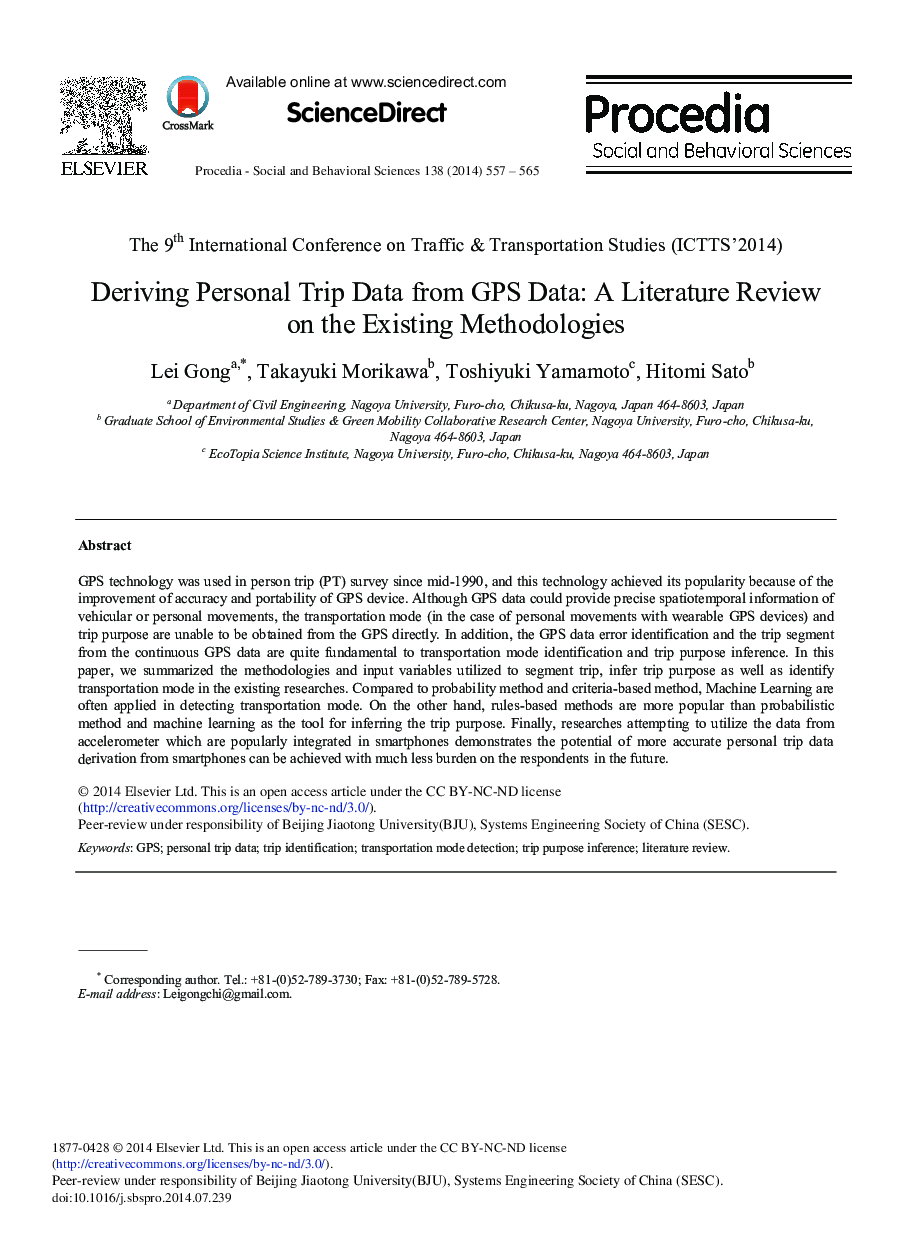| Article ID | Journal | Published Year | Pages | File Type |
|---|---|---|---|---|
| 1114253 | Procedia - Social and Behavioral Sciences | 2014 | 9 Pages |
GPS technology was used in person trip (PT) survey since mid-1990, and this technology achieved its popularity because of the improvement of accuracy and portability of GPS device. Although GPS data could provide precise spatiotemporal information of vehicular or personal movements, the transportation mode (in the case of personal movements with wearable GPS devices) and trip purpose are unable to be obtained from the GPS directly. In addition, the GPS data error identification and the trip segment from the continuous GPS data are quite fundamental to transportation mode identification and trip purpose inference. In this paper, we summarized the methodologies and input variables utilized to segment trip, infer trip purpose as well as identify transportation mode in the existing researches. Compared to probability method and criteria-based method, Machine Learning are often applied in detecting transportation mode. On the other hand, rules-based methods are more popular than probabilistic method and machine learning as the tool for inferring the trip purpose. Finally, researches attempting to utilize the data from accelerometer which are popularly integrated in smartphones demonstrates the potential of more accurate personal trip data derivation from smartphones can be achieved with much less burden on the respondents in the future.
